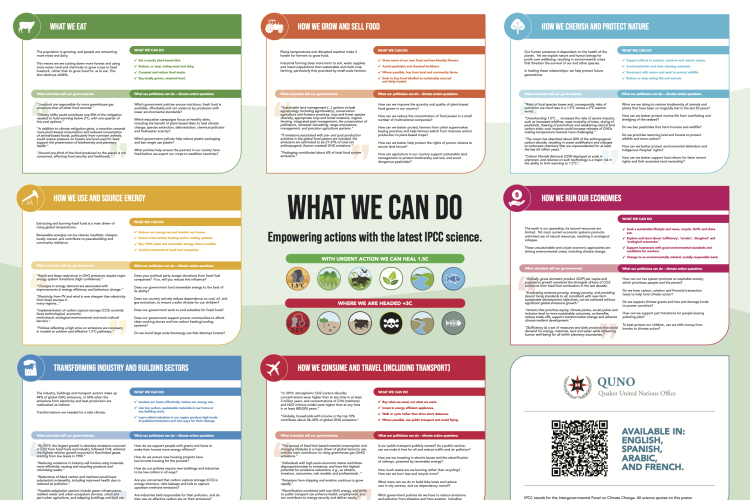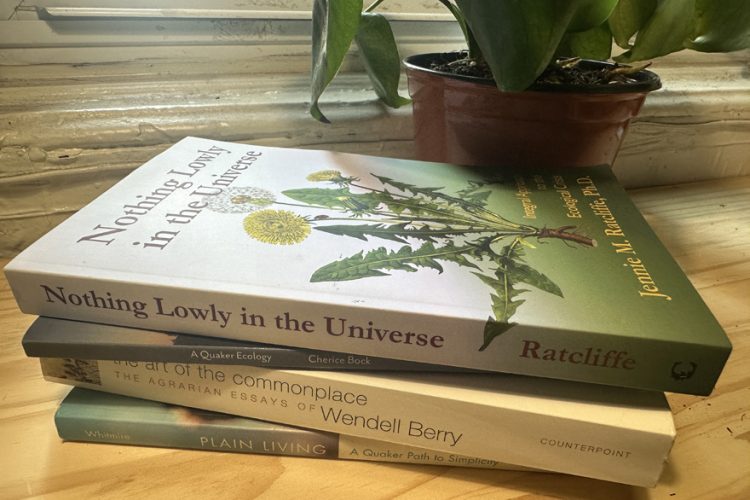Dreaming of a Green Christmas

Many of us look forward to the holidays as a time of family togetherness and much-loved traditions. In addition to the deep spiritual significance, we enjoy cookies, eggnog, caroling—what’s not to love?
But the holidays are also often a time when we may throw caution to the wind and buy things we might not ordinarily buy, indulging in special gifts, turning loose on the reins we might otherwise use to keep our purchases in check. This article shares a few ways we might balance our joy with some Earth-friendly considerations (if not for this year, then next).
CONSIDERING THE EARTH IMPACT
OF OUR PURCHASES
For years I’ve been considering the purchases I make in terms of their “earth impact.” I wonder whether my purchases are reinforcing a purchasing system I feel is unsustainable or going toward a company I feel follows sustainable and humanitarian (and animal-friendly) practices. What kind of a global citizen is this company? Were the animals treated ethically? Does the item I’m considering buying promote waste or conservation?
Before you start thinking that my gifts aren’t any fun, let me clarify: These kinds of questions come into play when I’m considering whether I should buy Item A or Item B:
• Are either of the items created locally? If no, which will have to travel least to get here?
• Were any harsh or dangerous chemicals or hard-to-replace resources used to create either item? What do I know about the manufacturer of the gift?
• How long will this item last? Is it a durable product that will serve my family member a long time, or is it a fun, fad gift that will be forgotten after the holidays?
• Does the item need batteries? If so, recyclable batteries and a charger should be part of the gift.
Two years ago I started what has become an annual tradition: I purchased a freezer-full of meat for my kids and grandkids from a local, sustainable, organic farm in my area (Tyner Pond Farm, at www.tynerpondfarm.com). It may sound like a scene from Scrooged, but my kids loved it and I knew the grandkids were eating healthy (free-range, happy meat, no antibiotics), which was an added plus for me. Don’t worry, though—the grandkids have fun things to unwrap and play with as well: Christmas isn’t all sausages.
You might also consider buying a live, potted tree this year and then replant it after the holidays. If you’re one of the 33 million households that prefers a cut live tree, check in your area to find out whether there are companies that mulch the tree instead of simply sending it to the landfill.
Additionally, email is a viable alternative to sending traditional Christmas cards; but if you yearn for the touch-and-feel tradition of writing and stamping messages of goodwill, be sure to look for recycled cards. They are everywhere this year—just look on the back or the side of the box for the recycled symbol.
HOW DO WE WRAP IT UP?
Each year as I wrap the gifts I buy, I feel that nagging concern about the wastefulness of the paper I use. Sure, it’s pretty. Yes, it does buoy the soul to see all the colorful, wrapped gifts under the tree. But the paper also is ripped open and discarded in just a matter of minutes Christmas morning. Is the pretty effect worth the cost, in terms of trees, energy, and landfill space? Perhaps. But perhaps not.
There are paper manufacturers that offer eco-friendly gift wrapping options: www.papersource.com is one such vendor. Treehugger.com also posts a number of green Christmas ideas, including wrapping alternatives and options. And Stanford University’s Holiday Waste Prevention page (http://bgm.stanford.edu/pssi_faq_holiday_waste ) says, “If every family reused just two feet of holiday ribbon, the 38,000 miles of ribbon saved could tie a bow around the entire planet.” That’s quite a savings!
TO GRANDMOTHER’S HOUSE WE GO
Of course the travel industry counts on us flying all over the globe to visit family and friends during the holiday season, and I wouldn’t begrudge anyone a face-to-face with Grandma or a ho-ho-hop to the Bahamas in the middle of a snowy cold season. But we know that travel does have a considerable CO2 cost, so perhaps some more discernment is in order. We could consider the number of trips we make in a year with an eye toward deciding which ones are “have tos” and which ones are “want tos.” We might still fly to Arizona for Christmas but skip a trip (or drive, or Skype) for another trip later in the year.
Thinking of our travel as part of a system that impacts a planet can be a helpful exercise. And if we just can’t offset the amount of traveling we need to do, one option to help mitigate our impact is to purchase carbon offsets to help “pay for the cost” of CO2 we are contributing.
If you’re thinking of purchasing a carbon offset, check out the Voluntary Carbon Tax site, created by Mt Toby Friends Meeting: http://voluntarycarbontax.org/
SEEING THE LIGHTS IN THEIR EYES
If you love holiday lights (and I do—I couldn’t give them up completely) be sure you upgrade to energy-efficient lights if you can. The old bulb strings may be nostalgic (and what isn’t, at holiday time?) but today’s lights use much less electricity and are safer, too. If you really want a super-green option, take a look at LED lights (LED stands for light-emitting diode), which use 80 percent less energy than conventional lights. LEDs can be used both indoors and out.
These days you can also find solar-powered holiday lighting in common big-box stores like Target and WalMart (as well as online at big retailers like Amazon.com). Contrary to popular belief, you don’t need full-on sun in winter to power-up your solar-powered holiday lights; even on a gray, blustery day they should be able to store up what they need to gleam brightly into the night.
We’d love to hear your ideas for a green holiday season! Email your tips to katherine@quakerearthcare.org and we’ll include them in the November-December issue of BeFriending Creation next year.
Wishing you and yours a soulful, peaceful, and green holiday!
RESOURCES
Holiday tips from the EPA: http://www.epa.gov/wastes/wycd/funfacts/winter.htm
Reduce.org: http://www.reduce.org/
Center for a New American Dream: http://www.newdream.org/holiday
Ideas for Giving to Green Causes: http://www.treehugger.com/culture/5-green-causes-holiday-gift-donations.html


